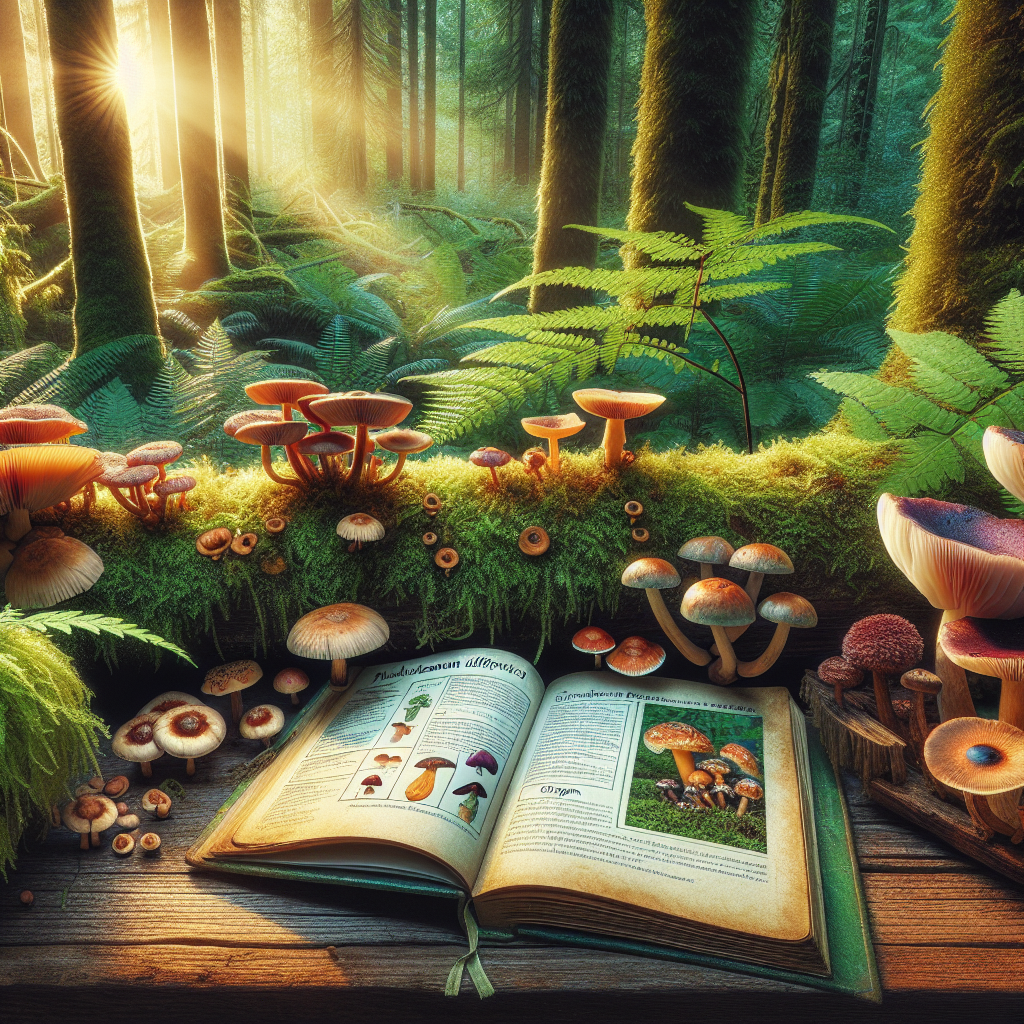Title: A Beginner’s Guide to Mushroom Identification in Oregon
Foreword
Welcome to the awe-inspiring world of Oregon mycology, where the forests are chock-full of wondrous fungi just waiting to be discovered, identified, and appreciated. Out here in the Emerald State, where the Douglas firs meet the ocean, magic happens in the form of mushrooms.
The Basics of Mushroom Identification
Before diving headfirst into the moss-covered world of Oregon mycology, it’s crucial to understand the basics of mushroom identification. So, let’s start simple. All mushrooms share two distinct features: the cap and the stem. However, these can vary in shape, color, and size, providing first hints to identification. But don’t forget to check underneath the cap for gills, pores, teeth, or a veil.
Loved by Locals: Iconic Oregon Mushrooms
The locals surely have their favorites when it comes to Oregon-grown mushrooms. The Pacific Golden Chanterelle is one such star, commonly found in the fir-filled forests of the Cascade Range. These amber-hued beauties are not only known for their nutty flavor but also for their distinctive shape and pseudo-gills.

Another local treasured icon is the Morel, usually spotted in the burn areas of the Willamette National Forest. These fungi are easily identifiable with their honeycomb-like caps and spongy texture. In Oregon, the Morel season starts around April. Keep an eye on the weather during this time—Oregonians know wet springs can yield a robust, early crop.
Hidden Hazards: Toxic Mushrooms to Watch Out For
We Oregonians love exploring, but it’s equally vital to remember that not all mushrooms are created equal. The Death Cap, ironically quite beautiful with its smooth, pale cap, is often mistaken for the edible Paddy Straw Mushroom. However, ingesting it can have severe consequences. It frequents the oak forests of Willamette Valley.
Another risky fungus is the Western Destroying Angel, common along Oregon’s coastal areas. It has a snow-white cap which contrasts against the darker forest floor, making it stand out, but this mushroom can have deadly results if consumed.
Where to Begin Your Fungal Adventure
Looking for the ideal treasure trove of mushrooms? Head to the Siuslaw National Forest. Its moist, temperate rainforest setting makes it a prime location for fungi. Trails like the Cape Perpetua Scenic Area or Drift Creek Wilderness are known to bring avid mycologists great mushroom joy.
Early autumn, just as the rains start in Oregon, is the perfect time to start exploring. Remember, coastal weather often changes dramatically in the afternoon, so start early, dress in layers, and always inform someone where you’re going and when you’re planning to be back.
Mushroom Foraging Ethics in Oregon
Every passionate mushroom hunter in Oregon lives by a certain code of ethics. To ensure the health of our forests, never uproot entire mushrooms—always cut the stem above ground level. Likewise, avoid compacting virgin ground around mushrooms or damaging the mycelium, the vital fungal network beneath the surface.
For the love of Oregon and her bountiful forests, please stick to the regulations set by our State Forestry Department. As part of these rules, foragers should never collect more than one gallon of mushrooms per day in any national forest in Oregon. The mushroom kingdom thanks you!
Ending Notes
As fuelled journey ends, remember there’s an incredible world right under our hiking boots that’s worth the curiosity and respect. Start slow, learn continuously, always prioritize safety, and fall in love with Oregon’s forests and their innumerable fungal treasures anew each day. Treat such excursions as a bond with nature—where respect for the environment and love for the bountiful Oregon wilderness go hand in hand.
Remember, Oregon mushroom hunting is much like surfing in Newport or craft beer in Bend—an integral part of the local culture and identity. The forests are always welcoming, and the joy of discovering new mushrooms is a gift that keeps on giving. So, put on the rain boots and take that first little step into the enchanting world of Oregon mycology.
Happy exploring, fellow aficionado!
